2025 Aston Martin Vantage track test: 656 horsepower in an unassuming package
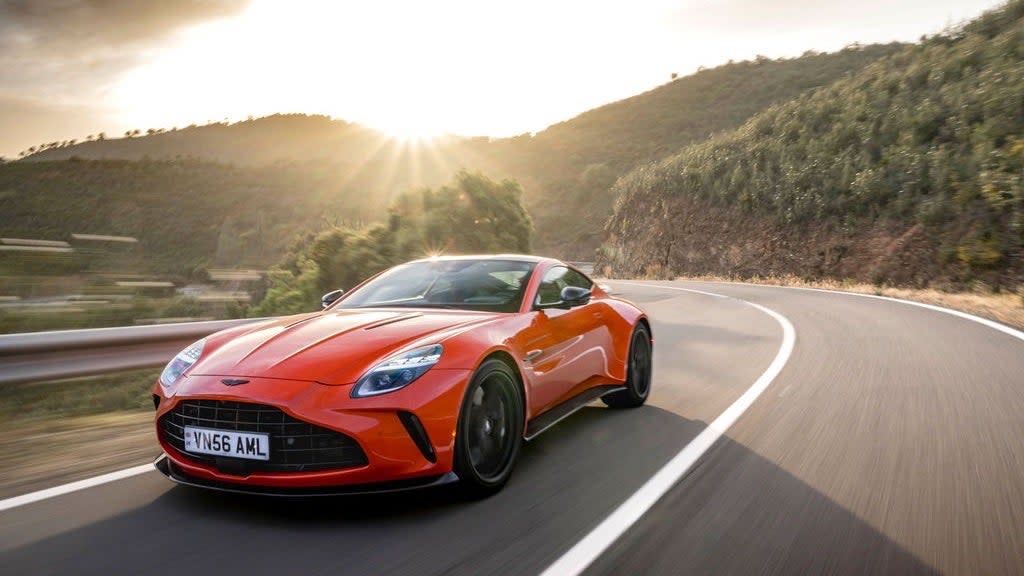
It is paradoxical that a secret agent would get dolled up in a tuxedo and attend high-roller social events, where he famously identifies himself by his name–his real name. The Aston Martin Vantage, a ride preferred by said agent, possesses similar paradoxical qualities.
The Vantage debuted as a stand-alone model in the Aston Martin line in 1972 as a rebodied 1967 DBS, looking very much like a Ford Mustang. The name was used earlier as a trim designation on several Aston models. Eventually, the Vantage starred in 1987’s The Living Daylights.
The modern Vantage’s svelte good looks can let it burble around town surprisingly unobtrusively for such a hot property. The Vantage is no look-at-me-Lambo. But a switch to the Sport Plus driving mode instantly unclogs the mufflers, letting the Mercedes AMG-sourced 656-horsepower, 590-lb.-ft. twin-turbocharged 4.0-liter V8 shout its arrival.
https://www.youtube.com/watch?v=AtJArHSXw1M\u0026ab_channel=DanCarney
This is not only good fun on the race track where I enjoy hearing the engine when it doesn’t annoy anyone, but it also proved useful on the winding mountain roads outside Seville, Spain, where Aston Martin introduced the refreshed Vantage to the press. When overtaking local kids on scooters, a quick twist of the mode dial ensured that they could hear the car’s approach without anything as garish as a blast of the car’s horn.
It seems like yesterday that we met the current-generation Vantage on a drive in Portugal in 2018, but the company has changed hands since that time, bringing with it an influx of product development cash. Canadian mogul Lawrence Stroll (who you may know–along withhis son, Formula 1 driver Lance Stroll–from Amazon Prime’s Drive to Survive F1 docu-series) took the then-publicly held Aston private in 2020.
Stoll has poured money into the project since, and the Vantage has benefited to the tune of a 30 percent increase in horsepower and a 15 percent increase in torque. That is an incredible 153 hp. and 85 lb.-ft. more than the previous version of what is basically the same engine.
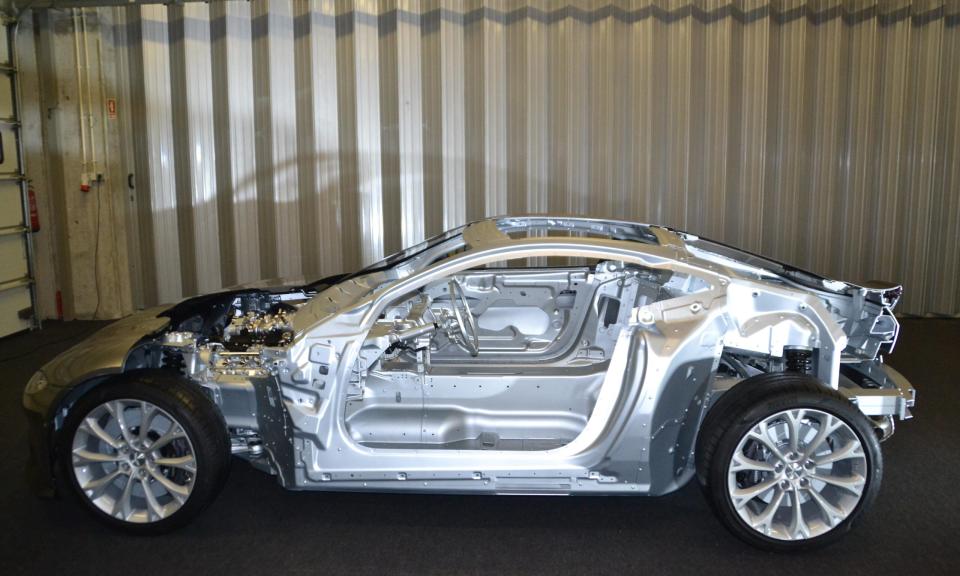
Aston Martin achieved this with the use of more aggressive camshafts, optimized compression ratio, and enlarged turbochargers. There is, correspondingly, improved cooling to dissipate the greater heat generated by the increased power. “We have a much bigger grille,” points out Aston Martin engineering director Simon Newton. “We’ve actually double-stacked some of the coolers (you’d probably call them radiators), so there’s 51 percent more airflow through the coolers in the new arrangement. The net result is the car has the ability to operate in hot ambients on track ten degrees (C) greater than the old car, which is quite significant.”
The familiar 8-speed ZF planetary automatic transmission received recalibrated shift programming to deliver faster, harder shifts that feel more like a dual-clutch transmission (DCT) that is in vogue for sports cars. A shortened 3.083:1 final drive ratio contributes to quicker, 3.4-second 0-60 mph acceleration while still achieving an incredible 202-mph top speed.
The improved acceleration is partly thanks to the addition of a launch control system that features driver-adjustable rear tire slip levels. “Unlike some launch systems that dial in a target RPM and play with the clutches to effect that, you are able to dial in your own slip coefficient, so you can vary the percentage slip you are getting at any given time,” Newton remarks.
Meanwhile, because this traditional transmission still has a torque converter, the Aston’s low-speed manners are impeccable, ensuring the driver always looks poised while parking in front of a crowded café of onlookers.
With greater power comes greater responsibility to control it, so Aston engineers refined the Vantage’s chassis, making it 10 percent stiffer than before and improving the suspension that connects the car to the road. “We put some additional structure across the front, behind the radiator packs,” explains Newton. “In addition, we put a slightly reengineered shear panel underneath, so we've upped the gauge of the material and we've upgraded the cross-brace, the strut brace if you like, above the engine, tying the front damper tops together.”
While we think primarily of the front of the car when considering its steering response and handling, it is important to not overlook the rear end, Newton says. “Equally important for steering, but also lateral response, is the rear of the car,” he says. “We increased the gauge of the shear panel underneath the rear differential, and we have tightened up the connection between the rear damper tops.”
Those changes at the back help with the steering connection because as soon as you steer, you're trying to get the back of the car to react laterally when you do your first steering input,” Newton continues. “It helps with on-center connection and also crispness of lateral response when you steer.”
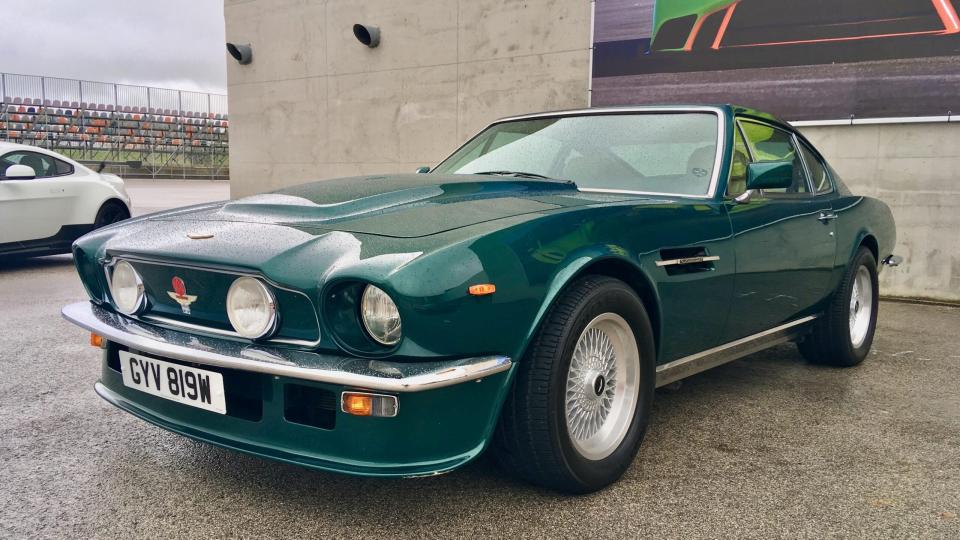
These structural improvements provide the foundation for the Bosch Integrated Vehicle Controller and the Bilstein active dampers to do their work. “[The Bosch controller] has a clear idea what the car is doing so it can predict what is required from the system,” Newton said. “[Electronic traction and stability management] comes in very early, very lightly, not at all disruptive to the driving experience.”.
Indeed, both on the sinuous mountain road where I exercised the Vantage for a solid half-hour of nonstop switchbacks and on the race track, the car demonstrated an ability to change direction quickly that is exceptional for a car with a front-mounted V8 engine. The ability to track exactly where I wanted it to go while also providing a plush ride over the kilometers of Spanish autopista on the way to and from the good roads showed how Aston engineers met the challenge of making the Vantage a good sports car and a good Aston Martin.
The company claims to have quantified the exact amount of reduction in understeer, putting it at a 12 percent improvement over the outgoing model. On the road, the Vantage exhibited no understeer. On the track, understeer did arise, but only as the consequence of very late braking for slow corners.
Here, the limiting factor is the Michelin Pilot Sport S 5 tires, which are Michelin’s all-around high-performance tire, not the company’s maximum performance track tire. Nevertheless, the Pilot S 5s delivered impressive track performance while providing good on-center, straight line steering on the road and presumably without the short lifespan of pure performance tires.
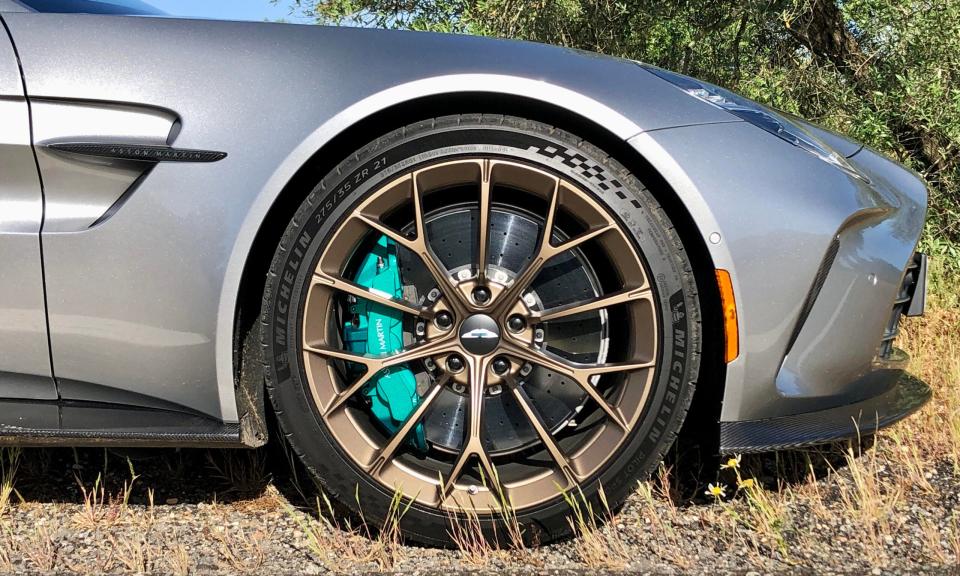
Newton points out that the tires are the same 275/35 R21 front and 325/30 R21 sizes as the ones used on the bigger, heavier DB12, which shows how much grip is available for the smaller, lighter Vantage. While they are the same size, they are not the same tires, as the Pilot Sport S 5s on this car have been tuned differently than those on the DB12. “We tuned these tires for this car, which is no small undertaking,” Newton insists.
All of the Vantage’s speed potential also demands a corresponding ability to shed that speed. The car’s standard brakes are Brembo-supplied 6-piston front calipers and 4-piston rear calipers squeezing 400-mm front rotors and 360-mm rear rotors. Cast iron rotors are standard equipment and carbon ceramic rotors are available as an upgrade for drivers who expect to do track driving. My test cars for both the street and the track were equipped with the carbon ceramics, but unexpectedly, even these ultimate performance brakes suffered fade after prolonged hard driving.
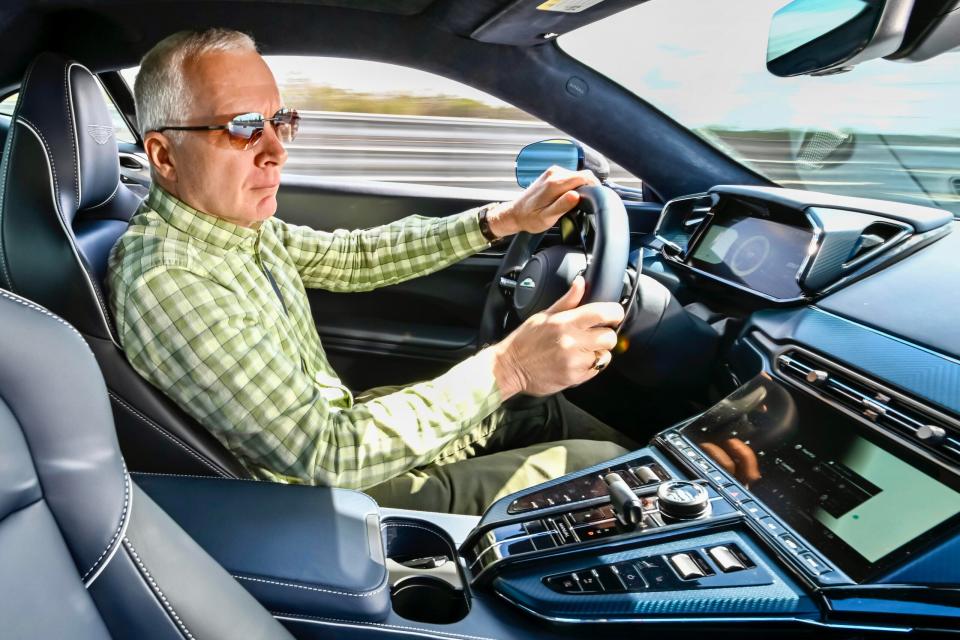
On the street, with its relentless switchback corners, the carbon ceramic brakes glazed, producing a high-frequency whine under light braking before continued use wore the glaze off the brake surface. On the track, the brake pedal got spongy, pressing most of the way to the floor under hard braking into slow corners. The carbon ceramic brakes can tolerate very high heat, with a nearly 1,500-degree operating temperature. However, this heat boils brake fluid, introducing the compressible bubbles to the fluid that let the brake pedal press closer to the floor.
My colleagues from other publications reported similar results with their cars toward the end of a long day at the track. This is no shortcoming of the Vantage, it just points to the fact that heavy fast street cars are not real race cars and they can’t be expected to perform as if they are. It would be equally unrealistic to expect to be able to take a race car on the kind of cross-country trip that is the Vantage’s stock-in-trade.
The Vantage is a delight to drive across an amazing range of conditions and circumstances, exactly as you’d hope, making it equally ready for when you’re dressed in an Armani suit or in one of the Aston Martin F1 team’s Alpinestars fire suits. It is the accomplishment of this paradox that makes Aston Martins the special cars they are. You can even ask a spy. You remember, what’s-his-name.

